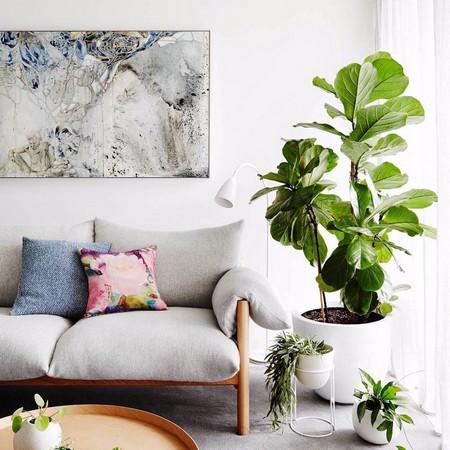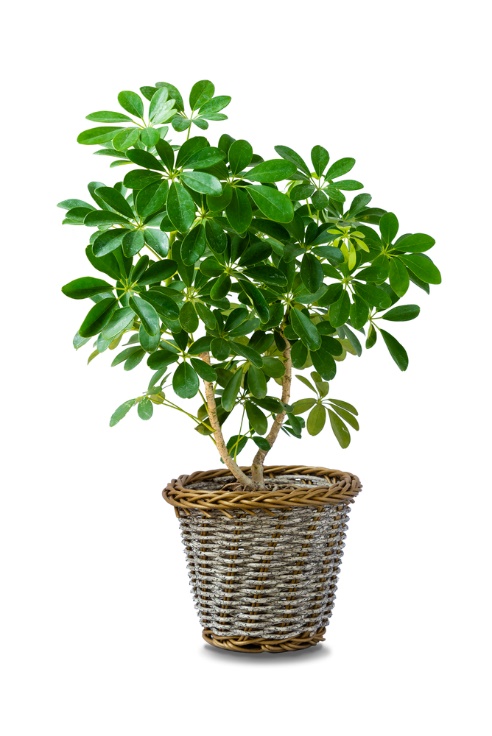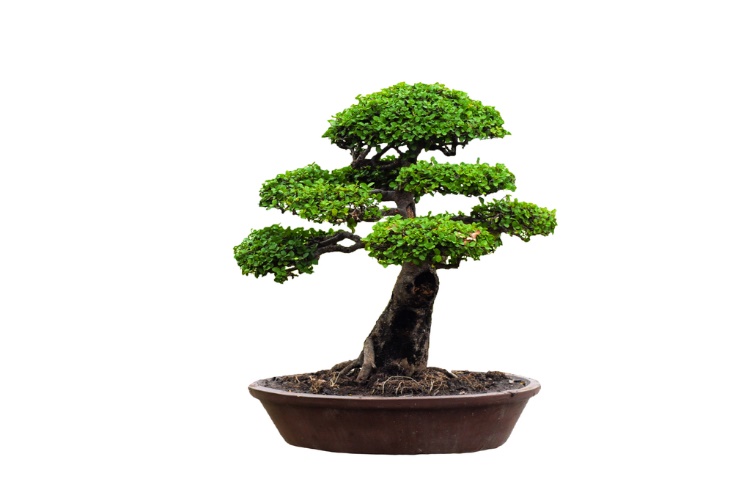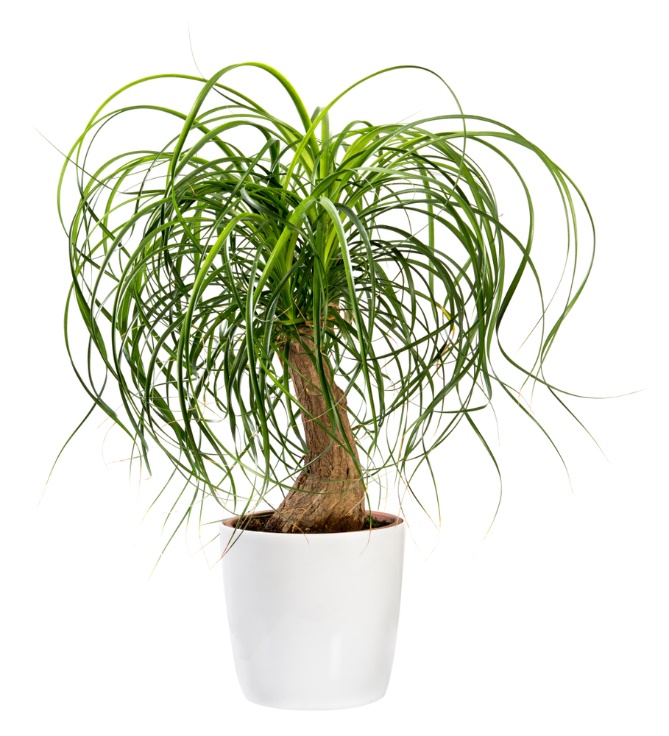Trees are great things to have in your yard. They clean the air, provide shade and privacy, are great for climbing, and are beautiful to look at. While many trees are just too big to think about growing inside, there are some trees that make wonderful accents to the inside of your home.
Here are just a few:
Yucca
If you like more of a desert tree, then the Yucca is for you. They have thick woody stems and pointy leaves that come in a variety of blue to blue-green colors and have yellow, cream, or white tones to them too.
Fiddle Leaf Fig Tree
If you like big, bold statements, you’ll want a Fiddle Leaf Fig tree in your living room. These trees have large, sculptured leaves that give the air of the tropics without being weepy or wispy. These trees love light but don’t like drafts, so keep them away from windows and doors, and you’re good to go.
Ficus
The Ficus is perhaps the most popular indoor tree there is. Heck, they even make a fake version that you just dust once in a while and forget about. The real version is actually a weeping fig tree if you want to get technical, and they come in different textures and heights, so they’re perfect for any room, anywhere.
Majesty Palm
Love the tropics but live where there seems to be perpetual winter? Then what about adding a Majesty Palm to your home? They are fan-shaped and have that tropical feel; best of all, they are slow growing if they aren’t getting strong sunlight. Throw on the heat, watch the palm tree and pretend you’re on the beach, even if it is January and there is a blizzard waging outside.
Norfolk Island Pine
If you want a touch of Christmas in your home year-round, what about a Norfolk Island pine? They are essentially baby Christmas trees that love bright light and moist soil. You can decorate them at Christmas with little bows or fairy lights, but they make a great addition to any room year-round.
Umbrella Tree
The umbrella tree has slender stems and beautiful leaflets and does well indoors because it prefers bright indirect light. It is a tropical tree that can grow as tall as 4 to 8 feet in height and requires occasional pruning to keep it shaped and more manageable. The umbrella tree is an accent for your space, or you can group it with other indoor trees to create a room divider or a natural screen.
Money Tree
The money tree is also known as the Malabar chestnut. This indoor tree plant typically has five trunks braided together and is used as a symbol of good luck and prosperity. The money tree thrives in indirect light in a humid environment, making the bathroom ideal for this indoor tree. The money tree is susceptible to root rot, so you want to ensure good drainage.
Meyer Lemon Tree
The Meyer lemon tree is an indoor citrus tree that appeals to chefs and home cooks who want to be sure they have only the freshest ingredients on hand. The fruit grown on this citrus tree is sweeter than others.
This indoor fruit tree loves sunshine, so you should take it outdoors during the warmer summer months. It should be safe and protected indoors during the winter. For the Meyer lemon tree to flower and fruit, it needs at least six hours of sunlight each day.
Olive Tree
Olive trees made our list of the best indoor tree, but it can’t last that way forever. You can keep your olive tree in a large pot indoors for eight to nine years before you need to take it outside to transplant it. Olive trees tolerate dry air and soil and are good if you are sometimes an inattentive caretaker. This tree is native to the Mediterranean, so it requires a good amount of sunshine.
Fishtail Palm
The fishtail palm gets its name because this indoor tree’s leaves resemble a fish’s tail. It makes for a great focal point in your home or office. Make sure it gets plenty of sunlight, and don’t ever let the fishtail palm dry out. It is a rainforest plant that prefers humid conditions, so make sure to spray it with a bit of water regularly.
Bonsai Tree
When you think of the different types of indoor trees there are, the first one that probably comes to your mind is the bonsai tree. Bonsai isn’t a species of tree, however. It is an ancient Chinese growing technique to keep the tree in miniature form.
One of the more commonly used species of Bonsai trees is the Ficus tree, but the juniper might be the best bonsai tree for indoors. They require six hours of direct sunlight each day when grown indoors.
Rubber Tree
The rubber tree is another form of Ficus that is ideal for growing indoors. It got its name due to the fact that its latex sap used to be used to make rubber. Today, it is used as an ornamental focal point in homes because of its large and waxy leaves.
The rubber plant is also incredibly easy to care for. The rubber tree can grow to be up to 30 feet in height. Be careful if you have pets or children because the sap can be toxic. Medium to bright indirect light is best for the rubber tree, but it can also tolerate low light conditions well.
Ponytail Palm
The ponytail palm belongs to the Agave family and is considered a succulent. It has also been known as the elephant foot tree or bottle palm tree because its trunk can store water. The ponytail palm is easy to grow indoors and is very forgiving, making it a good choice if you are just a beginner in the plant world. Since it is a succulent, you don’t want to water it too much. Allow the soil to dry. It can survive in low light conditions but does prefer bright sunlight.
Parlor Palm
The parlor palm is also commonly referred to as the bamboo palm because of its stems. The parlor palm can grow up to 12 feet tall and is easy to care for. You only need to water the palm tree every one to two weeks. Make sure the soil dries out between waterings. The parlor palm prefers medium to bright indirect light but can tolerate low light conditions. Keep it out of direct and intense sunlight.
Dracaena Tree
Also known as a dragon tree, the dracaena tree is easy to maintain and grows slowly. This indoor plant can grow to be up to six feet tall. It has spiky leaves and an almost Dr. Seuss-like quality, making it a good choice if you want to add a bit of whimsy to your indoor space.
The dragon tree prefers moist soil but should be dry between waterings. It is best to use purified or distilled water. They also prefer bright, filtered light. When they are in direct sun, the leaves become scorched, eventually turning brown and falling off.
And there you have it; an extensive list of the best indoor tree you can choose to liven up and add greenery to your home or office. When choosing the best indoor tree, make sure you are up for the maintenance and care the tree requires and you can provide it with the light exposure it needs.
Editor’s Note: This post was originally published in December 2017 and has been completely updated.















